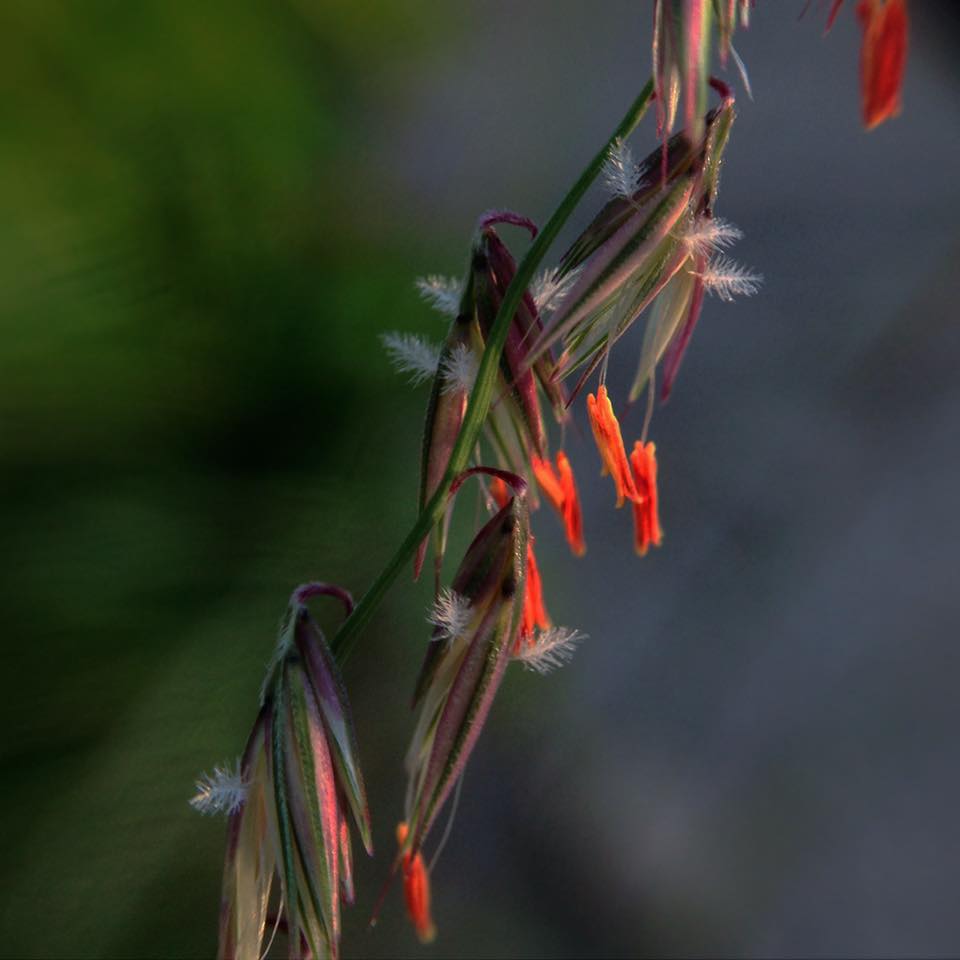Grass flowers have their own unique beauty. Examine them with a hand lens and a whole new world of angiosperm diversity suddenly opens up. Unlike other flowering plants, their charm lies not in showy sepals or petals, but in an intricacy centered around the utilization of wind for pollination. However, such floral organs are not lacking. Grass flowers do in fact produce a perianth, the function of which has been highly modified.
To see what I am referring to, you need to do some dissection under a scope. Pull off a flower and peel away the sheaths (the palea and lemma) that cover it. Inside you will see an ovary complete with feathery stigmas as well as the anthers. At the base of the ovary sits a pair of scales called lodicules. These lodicules are thought to be the rudimentary remains of the perianth. They certainly don't resemble sepals or petals but that is because the function of these structures is not to attract pollinators. They assist in pollination in another way.
Photo by Matt Lavin CC BY-SA 2.0
When grass flowers are ready for reproduction, the lodicules begin to swell. This swelling serves to push apart the rigid palea and lemma that protected the flowering parts as they developed. Once apart, the anthers and stigma are free to emerge and let wind do the dirty work for them. Lodicules differ quite a bit from species to species in their size, shape, and overall appearance. Much of this is likely tied to the overall structure in grass flowers.
Further Reading: [1]


